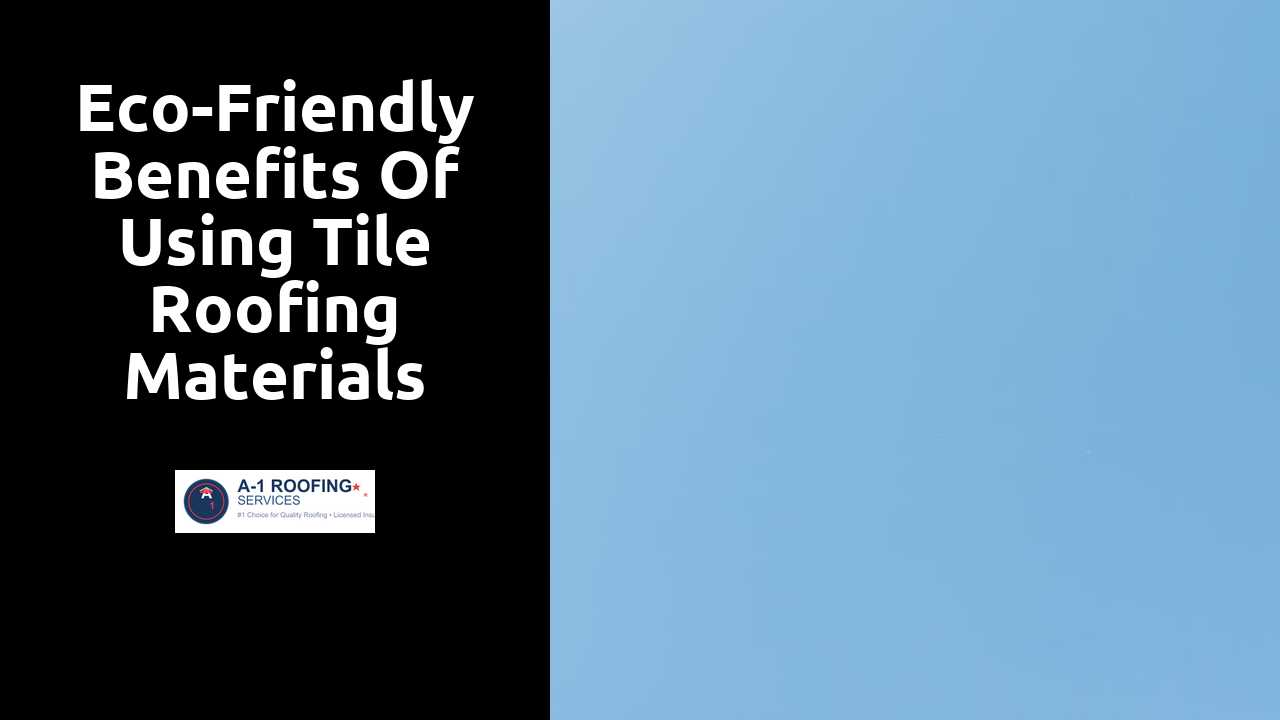
Eco-Friendly Benefits of Using Tile Roofing Materials
Table Of Contents
The Role of Tile Roofs in Stormwater Management
Tile roofs can significantly contribute to effective stormwater management systems. Their design allows rainwater to be directed away from the building and into established drainage systems. This minimizes water runoff and reduces the risk of flooding in urban areas, promoting sustainability within the community. The materials used in tile roofs often have natural water-resistant properties, further enhancing their ability to manage precipitation effectively.
Properly installed tile roofs can also serve as part of a larger green infrastructure strategy. They enable homeowners to integrate features like rain gardens or cisterns that can collect and retain stormwater. By encouraging rain to be absorbed rather than simply channeled away, these systems help replenish groundwater supplies and enhance local ecosystems. This holistic approach to stormwater management demonstrates how tile roofing materials can play a vital role in environmentally friendly building practices.
See here for more great tips.
Promoting Sustainable Water Use Through Efficient Design
Tile roofing systems are designed with water drainage in mind, enabling effective management of rainwater runoff. Their sloped surfaces facilitate the quick redirection of water away from the building foundation. This efficient design minimizes water accumulation, reducing the risk of leaks and structural damage. Additionally, tile roofs often incorporate innovative features, such as integrated gutters and downspouts, further enhancing their ability to channel stormwater efficiently.
The materials used in tile roofing can also contribute to sustainable water use. Many tiles are manufactured to be porous, allowing for better absorption and evaporation rates. This characteristic helps mitigate the urban heat island effect by cooling the surrounding environment while promoting groundwater recharge. By leveraging these design elements, tile roofs not only protect properties but also play a crucial role in fostering a more sustainable approach to water resource management in urban settings.
Aesthetic Versatility and Its Environmental Impact
Tile roofing offers an extensive range of colors, textures, and styles, allowing homeowners and builders to achieve unique aesthetics that complement various architectural designs. This versatility helps create a visually appealing environment while ensuring that the building materials align with the surrounding landscape and neighborhood character. The ability to customize the appearance further encourages the use of sustainable options, as more homeowners are willing to invest in eco-friendly roofs that do not compromise on style.
Making a choice that incorporates tile roofing can lead to long-lasting durability and reduced maintenance needs. These roofs not only maintain their beauty over time but also can boost energy efficiency through their reflective properties. As a result, installations contribute positively to urban heat island mitigation, reflecting sunlight and promoting cooler surroundings, which can lead to decreased reliance on energy-consuming cooling systems.
Enhancing Property Value While Supporting Eco-Friendly Choices
Investing in tile roofing can significantly elevate the value of a property. Its durability and longevity appeal to potential buyers, as tile roofs often outlast other roofing materials by decades. Homeowners recognize that a well-maintained tile roof can be a crucial factor in resale value, attracting attention in a competitive market. The aesthetic charm of tile contributes to curb appeal, making homes more inviting and visually appealing.
Eco-friendly choices in roofing materials not only benefit the environment but also resonate with a growing demographic of environmentally conscious buyers. Individuals are increasingly looking for homes that reflect sustainable living practices. When a property features a tile roof, it conveys a commitment to energy efficiency and resource conservation, making it a desirable option for those who prioritize eco-friendliness in their purchasing decisions.
The Importance of Recyclability in Roofing
Recyclability plays a critical role in sustainable building practices. As environmental concerns grow, the ability to repurpose roofing materials reduces landfill waste and supports a circular economy. Tile roofing products made from natural materials can be broken down and reused, minimizing the need for raw resources. This process not only conserves energy but also lessens the carbon footprint associated with manufacturing new materials.
Many manufacturers now offer tile roofs designed with recyclability in mind. Used tiles can often be returned to the manufacturer or repurposed in various construction applications. By choosing such roofing materials, property owners contribute to sustainability while enjoying roofs that provide durability and aesthetic appeal. This approach aligns with broader environmental goals encouraging responsible consumption and waste management.
How Tile Materials Can Be Reclaimed and Repurposed
Reclaiming and repurposing tile materials serves as an effective solution to reduce waste in roofing applications. When a tile roof reaches the end of its life cycle, many of its components can be salvaged and reused. This process not only keeps materials out of landfills but also conserves the energy and resources needed to produce new tiles. Various companies specialize in deconstructing roofs carefully, allowing for the retrieval of undamaged tiles that can be resold or repurposed for new projects.
The versatility of tile materials means they can be integrated into different designs beyond traditional roofing. Reclaimed tiles can find new life in pathways, flower beds, or as decorative elements in outdoor spaces. This creative reuse not only minimizes waste but also fosters a connection between modern architectural designs and historical craftsmanship. Utilizing these materials provides an opportunity to celebrate the aesthetic qualities of tiles while promoting a sustainable approach to construction and renovation.
Related Links
The Best Tile Roofing Styles for Different ClimatesTile Roof Maintenance: Tips for Longevity and Performance